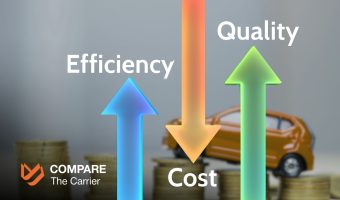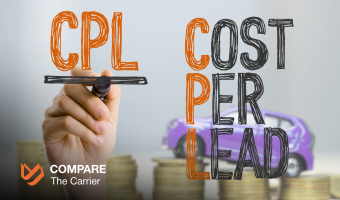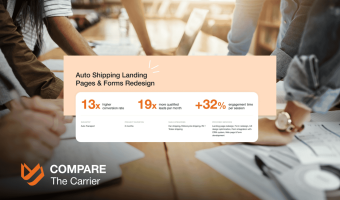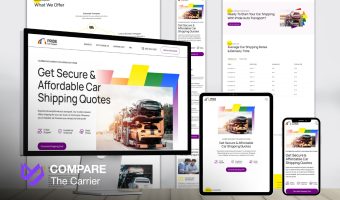Forget what you think you know about chasing down transport or moving leads.
If your approach to lead management hasn’t had a serious tune-up lately, you’re likely leaving a pile of cash on the table for your competitors.
It’s time to get serious with some Top Lead Tracking Strategies for 2025.
Recent industry analyses highlight that businesses effectively using CRM systems for lead management can see conversion rate increases by as much as 300% (Cirrus Insight, 2025).
That’s not just a small bump; it’s a game-changer, especially in the competitive transport and moving sector. This isn’t about fancy jargon; it’s about smart, actionable steps to make sure every potential customer gets the attention they need to turn into a paying client, boosting your conversion rate optimization and making your business engine hum.
Why Your Bottom Line Depends on Solid Lead Tracking

Today effective lead tracking strategies are fundamental to your financial survival and growth. Ignoring them means losing transport and moving leads, which translates directly to lost revenue. Solid lead management is your best defense against this, turning potential losses into profits.
Defining “Lead Tracking” for Movers & Haulers
Simply put, lead tracking for your business is the systematic way you capture, monitor, and manage every potential customer. It means knowing exactly how leads find you (like “Apex Logistics” or the Miller family), understanding every interaction, and seeing their current stage in your sales pipeline.
This isn’t just list-keeping; it’s the core of smart lead management and drives conversion rate optimization.
Key Lead Tracking Metrics You MUST Watch
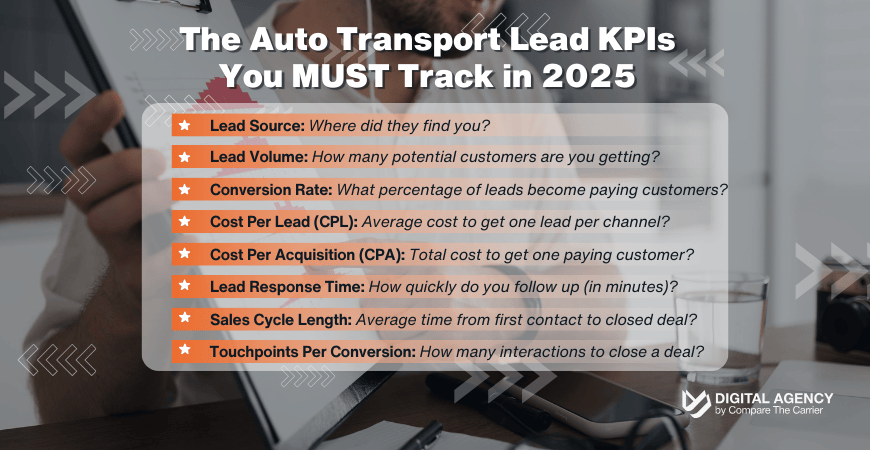
If you’re not measuring, you’re guessing. Tracking these Key Performance Indicators (KPIs), consistently emphasized by top auto transport CRM, is crucial for understanding the real impact of your lead tracking strategies.
Monitoring these numbers provides the business intelligence to make sharper, more profitable decisions, focusing on shipping KPIs that drive revenue growth. In 2025, your lead tracking strategies deliver this intelligence, shifting your operations from reactive to proactive.
Essential Lead Tracking Strategies & Infrastructure
To truly master your lead tracking strategies and stop transport leads and moving leads from vanishing, you need a rock-solid infrastructure. This isn’t about collecting fancy software; it’s about strategically deploying core tools that form the backbone of effective lead management and drive conversion rate optimization.
These are the must-haves for any transport or moving company serious about growth in 2025.
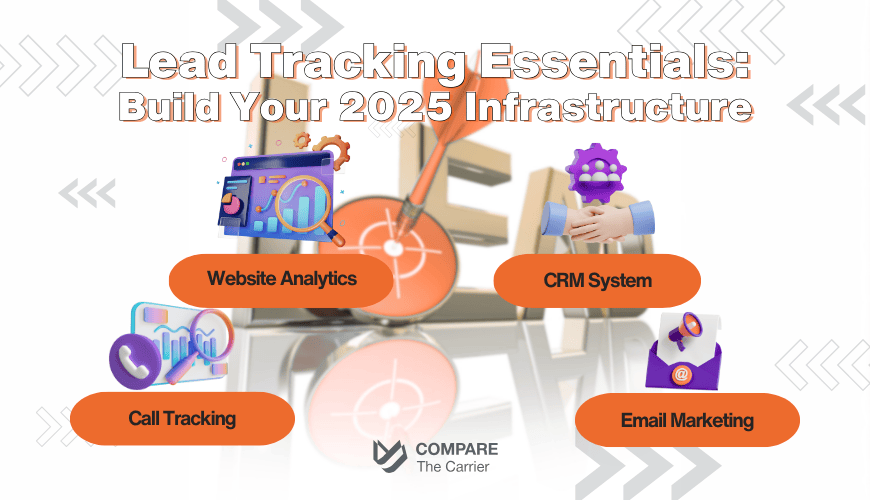
1. Website Analytics Tools: Uncover Lead Origins & Behavior
2. Your CRM system: Unify and Conquer Your Leads
3. Call Tracking Systems: Attribute and Analyze Phone Leads
4. Email Marketing Platforms: Track Engagement & Nurture Prospects
Laying this foundational infrastructure is the critical first step. With these systems working for you, you’re equipped to capture, understand, and effectively manage every lead that comes your way.
Advanced Lead Tracking Strategies for Max ROI
You’ve laid the groundwork with essential tracking systems. Now, let’s shift into high gear. These advanced lead tracking strategies are about precision, deep analysis, and squeezing maximum value from every transport lead and moving lead. This is how you elevate your lead management and truly drive conversion rate optimization in the competitive 2025 landscape.
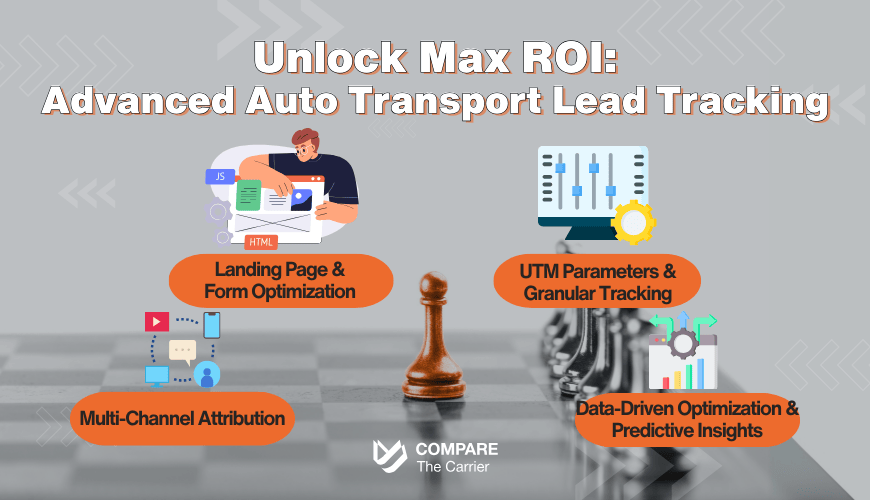
1. Landing Page and Form Optimization: Architecting the “Yes”
The Strategy: Don’t just direct ad clicks or email links to your generic homepage. For every distinct campaign or service (e.g., “Cross-Country Moving Leads,” “Expedited Transport Leads“), craft a dedicated landing page, a tactic central to many successful logistics website design blueprints. Then, ruthlessly optimize your inquiry forms for simplicity and speed.
Why It Drives ROI
Dedicated landing pages consistently outperform generic pages because they offer a focused message aligned with the ad or link the prospect clicked. Industry best practices, often highlighted by platforms like HubSpot and Unbounce, show that targeted landing pages can significantly increase conversion rates – sometimes by 50% or more compared to sending traffic to a homepage.
Regarding forms, the consensus from user experience research (see reports from Nielsen Norman Group or form analytics services) is that shorter forms generally lead to higher completion rates. Every unnecessary field is a potential point of friction. For initial transport leads or moving leads capture, aim for the bare minimum needed to qualify and make contact.
Key Actions: Create unique, compelling landing pages. A/B test headlines, calls-to-action (CTAs), and form length. Ensure lightning-fast mobile load times.
2. UTM Parameters & Granular Campaign Tracking: Forensic Marketing Analysis
The Strategy: Implement Urchin Tracking Module (UTM) parameters across all your digital marketing links (emails, social media ads, PPC campaigns, even QR codes). This allows you to dissect campaign performance with surgical precision.
Why It Drives ROI
While standard analytics might tell you a lead came from “Google,” UTMs, as championed by digital marketing authorities like the Digital Marketing Institute or Google’s own Analytics resources, can tell you it came from a specific ad group, keyword, or even a particular email newsletter link. This granularity is crucial for understanding which precise elements of your campaigns are generating valuable moving or transport leads.
This detailed data allows for highly informed budget allocation. You’re not just throwing money at a channel; you’re investing in specific, proven tactics, dramatically improving marketing ROI, especially when combined with advanced PPC tactics for logistics advertising. This is a hallmark of advanced lead tracking strategies.
Key Actions: Develop a consistent UTM tagging system. Regularly analyze campaign performance in your analytics platform based on these tags.
3. Multi-Channel Attribution Modeling: Seeing the Whole Customer Journey
The Strategy: Move beyond the often-misleading “last-click” attribution. Adopt more sophisticated attribution models that acknowledge the various touchpoints a customer interacts with before converting.
Why It Drives ROI
A prospect might see a Facebook ad, later search on Google, click an organic link, receive a retargeting ad, and then finally convert on a transport lead form. Last-click only credits the final action. However, research and analysis from firms like Gartner or discussions in publications like MarketingProfs emphasize that understanding the entire customer journey is vital. Different models (Linear, Time Decay, Position-Based – often available in advanced CRMs or analytics suites like Google Analytics 4) help assign value more accurately across the path to acquiring moving leads.
This holistic view helps you understand the synergistic effect of your marketing channels, leading to better budget allocation across your entire lead management ecosystem and improved long-term conversion rate optimization.
Key Actions: Explore the attribution models available in your analytics or CRM. Start with a simple model beyond last-click and gradually refine your understanding.
4. Data-Driven Optimization & Predictive Insights: The Continuous Improvement Loop
The Strategy: Treat your lead tracking data not as a historical record, but as a live feed for continuous improvement. Regularly analyze trends, identify bottlenecks, and increasingly, leverage tools that offer predictive insights.
Why It Drives ROI
The principle of continuous improvement (Kaizen) is as applicable to sales and marketing as it is to manufacturing. Industry leaders and sales consultancies consistently stress that top-performing organizations regularly review their pipeline data to refine processes.
Modern CRMs and sales intelligence platforms (often discussed in publications like FreightWaves or Transport Topics for industry-specific applications, or by general sales tech reviewers) are increasingly incorporating AI to identify patterns in your transport sales or moving sales data. This can help predict which moving leads are most likely to close or which transport leads might need a different approach, allowing for more targeted and efficient lead management.
Key Actions: Schedule regular (e.g., monthly) deep-dive data reviews. Identify stages in your funnel where leads stall. Test changes to your follow-up processes, messaging, or targeting based on these insights. Explore AI-powered features in your CRM.
By embracing these advanced lead tracking strategies, backed by industry best practices and a commitment to data analysis, you’re not just managing leads; you’re actively engineering a more profitable future for your transport or moving business.
Common Mistakes in Lead Tracking (and How to Avoid Them)
Even with robust lead tracking strategies initiated, many transport and moving companies encounter preventable setbacks. These common errors can undermine your lead management, stall conversion rate optimization, and lead to lost transport and moving leads.
Recognizing these pitfalls is key to sidestepping them and maintaining a healthy sales pipeline.
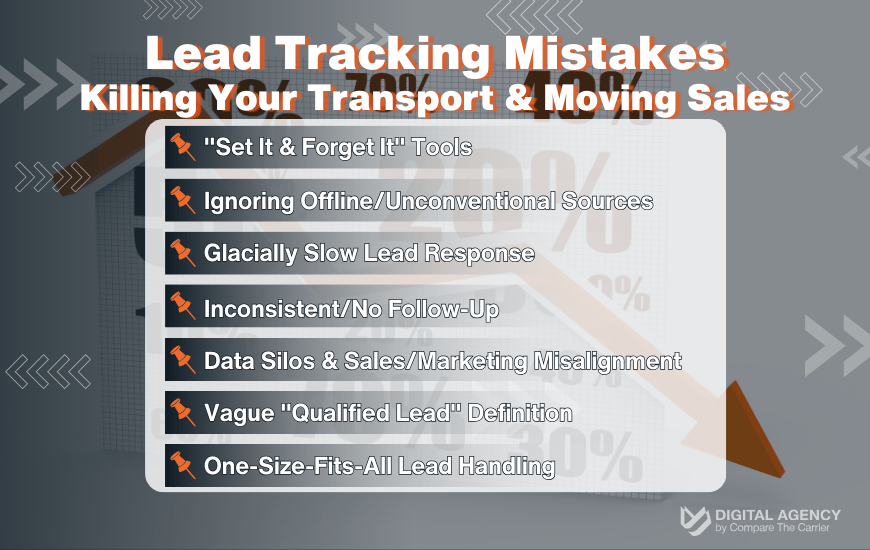
Common Pitfall | The Damaging Impact on Your Leads | The Smart Fix for Success |
1. “Set It & Forget It” Tools | CRM/analytics software becomes an underused digital paperweight, missing automation & crucial insights for your lead tracking strategies. | Ensure full team training. Customize tools to your specific sales process for moving & transport leads. Regularly audit tool usage & effectiveness. |
2. Ignoring Offline/Unconventional Sources | Focusing only on digital channels gives an incomplete lead origin picture, potentially misallocating marketing spend. | Implement call tracking. Standardize manual CRM entry for all non-digital transport & moving leads. Consistently ask, “How did you hear about us?” |
3. Glacially Slow Lead Response | Letting new transport or moving leads wait kills conversion rate optimization. Leads go cold fast; competitors win. | Aim for follow-up in 5-15 minutes. Use CRM automation for instant acknowledgments & lead assignment. Implement efficient lead routing. |
4. Inconsistent/No Follow-Up | Minimal contact attempts or no structured follow-up means lost revenue, as most sales require multiple touchpoints for moving or transport leads. | Develop a multi-touch follow-up cadence (calls, emails). Automate parts of this sequence. Ensure your lead management system logs all attempts. |
5. Data Silos & Sales/Marketing Misalignment | Marketing generates transport leads unaware of outcomes; sales gets poor quality leads. Data isn’t shared, fragmenting lead tracking strategies. | Integrate CRM, marketing, & analytics tools. Hold regular sales/marketing meetings to discuss lead quality & campaign performance. Align teams with shared goals. |
6. Vague “Qualified Lead” Definition | Sales & marketing having different ideas of a good moving or transport lead leads to inefficient time use & poor conversion rate optimization. | Collaboratively define MQL & SQL criteria. Implement lead scoring to prioritize follow-up based on demographics & engagement. |
7. One-Size-Fits-All Lead Handling | Using a generic approach for every transport & moving lead, regardless of source or needs, means messaging falls flat & lowers conversions. | Segment leads (by service, source, etc.). Tailor messaging & offers. Use data from your lead tracking strategies to personalize interactions. |
Avoiding these common blunders is about continuous refinement of your lead tracking strategies and lead management processes to build a more profitable sales engine.
From Data-Driven Wins to Your Strategic Advantage: Partnering with Compare The Carrier
Seeing how effective lead tracking strategies transform businesses is powerful. It’s not just about theories; it’s about real transport and moving companies achieving significant breakthroughs in their lead management, conversion rate optimization, and overall profitability. These successes, fueled by a commitment to tracking and optimizing every transport and moving lead, pave the way for sustainable growth.
And the good news?
These kinds of results are within your reach.
Real-World Impact: How Smart Tracking Changes the Game
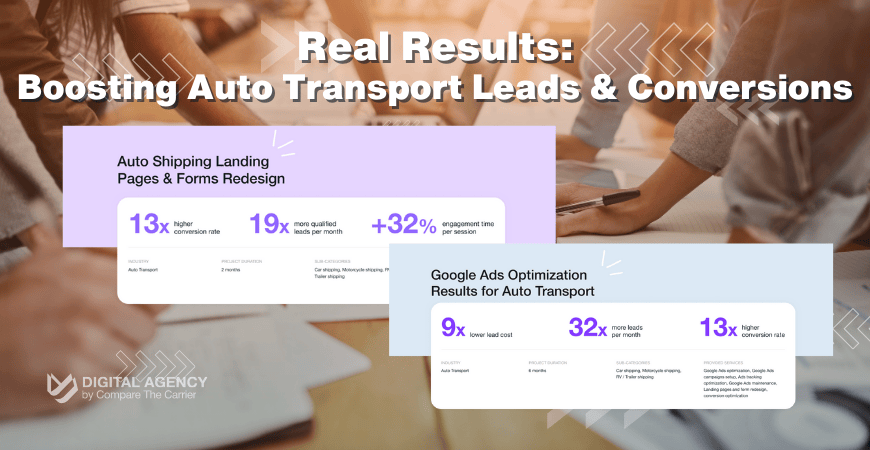
One auto transport company transformed its lead generation by overhauling its online presence.
Their initial challenge was a low 2% conversion rate from Google Ads, a quote form missing key fields, and slow loading times. Compare The Carrier addressed this by redesigning landing pages with clear messaging and user-friendly layouts, revamping the quote form for better data capture and user experience, and ensuring seamless CRM integration.
This strategic approach yielded a 13x higher conversion rate (jumping from 2% to 26%), 19x more qualified leads per month, and a 32% increase in visitor engagement time within just two months.
Another auto transport client struggling with high Google Ads costs saw a dramatic turnaround.
They initially faced an average cost per lead of $63.26 and a conversion rate below 2%, generating only 100 leads in four months. Through a phased optimization process, Compare The Carrier overhauled their Google Ads campaigns, implemented rigorous tracking, created new ads, and developed service-specific landing pages with improved load speeds.
After six months, the results were striking, with the final month showing a 9x lower lead cost at $7.11, 32x more leads (over 800 in that month), and a 13x higher average conversion rate of 26.17%.
These aren’t isolated incidents. They are clear examples of how a dedicated approach to tracking, analyzing, and refining your processes for handling transport and moving leads can yield extraordinary outcomes.
Compare The Carrier: Your Partner in Streamlining Lead Tracking & Maximizing ROI
Achieving these kinds of results requires more than just understanding the concepts; it demands expert implementation, industry-specific knowledge, and often, a guiding hand to navigate the complexities of modern lead tracking strategies and lead management systems. This is precisely where Compare The Carrier steps in.
We don’t just provide high-quality transport and moving leads; we empower you with the strategies and systems to convert them effectively and profitably. With over four years of dedicated experience in the transport and logistics sector, we understand the unique challenges you face and offer tailored solutions to:
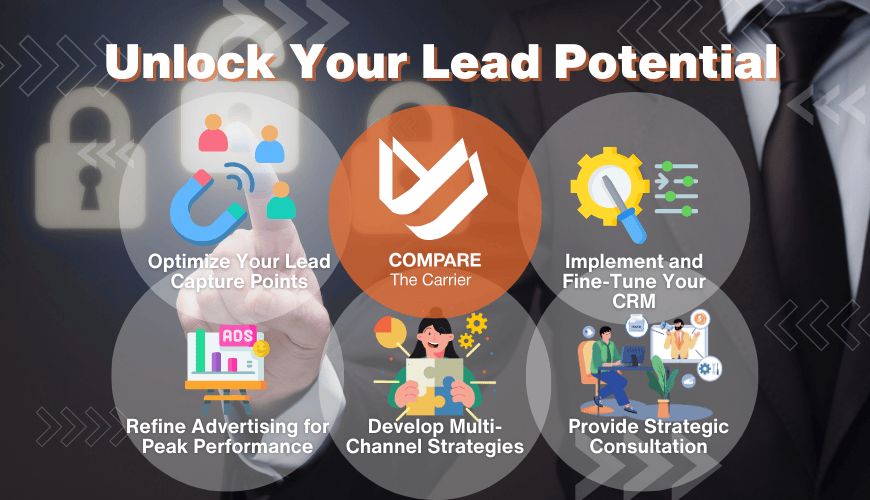
By partnering with Compare The Carrier, you gain more than a service provider; you gain a strategic ally dedicated to simplifying your operations, enhancing your lead management capabilities, and significantly boosting your bottom line. We help you turn data into dollars.
Ready to transform your lead tracking and see real results?
This combined section aims to inspire with real results and then clearly position Compare The Carrier as the solution to help achieve similar success.
Conclusion: Maximize Your ’25 Wins with Smart Lead Tracking
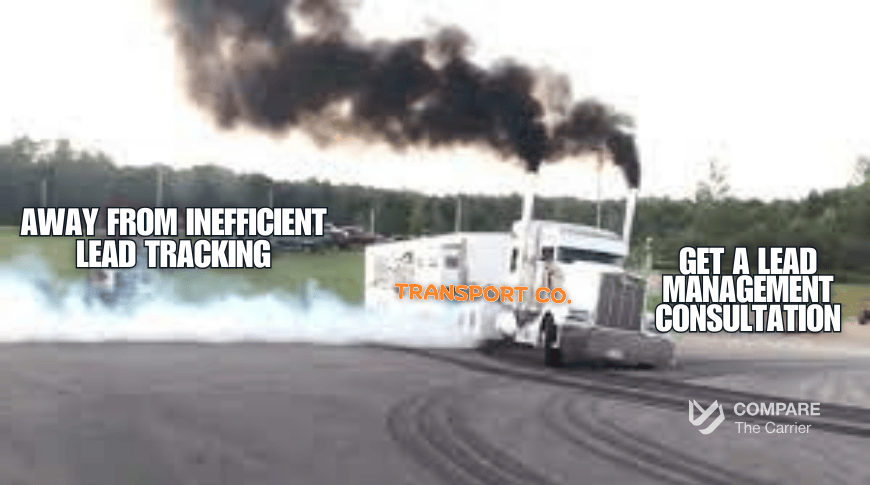
The message for transport and moving companies in 2025 is clear: overlooking your transport or moving leads is a direct hit to your profits. Implementing robust lead tracking strategies isn’t just an operational upgrade; it’s the cornerstone of a thriving business.
By building the right systems, leveraging advanced techniques, sidestepping common errors, and committing to data-driven lead management, you shift from hoping for sales to engineering them.
The path to superior conversion rate optimization and a healthier bottom line is paved with consistent effort and intelligent tracking. Embrace these strategies, and watch your business transform. Compare The Carrier is ready to be your partner in this journey, helping you turn every lead into a victory.
FAQ
What’s the single most important first step to improve my lead tracking?
Implementing a Customer Relationship Management (CRM) system. This acts as your central database and workflow engine for all lead management activities, from capturing transport leads to tracking follow-ups for moving leads.
How much do lead tracking software and CRMs typically cost for a transport company?
Costs vary widely. Some basic lead tracking tools might be free or low-cost, while comprehensive auto transport CRMs can range from $25-$150+ per user per month, depending on features and complexity. Many offer scalable plans suitable for businesses with 1-100 vehicles.
How often should I be analyzing my lead tracking data?
For high-level metrics like lead volume and response times, a quick daily or weekly check is good. A more in-depth analysis of conversion rates, CPL, and campaign performance should be done at least monthly to identify trends and areas for conversion rate optimization.
What is a “good” lead conversion rate for a moving or transport company?
This varies by lead source, service type (e.g., local moving leads vs. international transport leads), and market conditions. However, instead of chasing a universal number, focus on benchmarking your current rates and consistently working on conversion rate optimization through better lead tracking strategies and follow-up. Industry reports sometimes cite averages, but your own improvement is the best goal.
I already have a CRM, but I feel like I’m not using it well for lead tracking. Can Compare The Carrier help?
Yes. We often help businesses optimize their existing CRM setup, improve data hygiene, build better workflows for lead management, and ensure their teams are leveraging the system to its full potential for tracking transport leads and moving leads.
Request a lead management consultation to discuss your specific needs.
